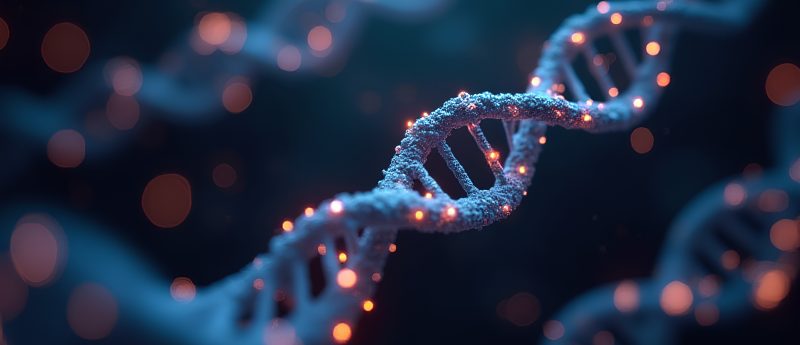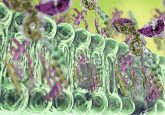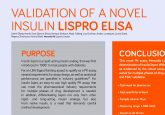An interview with Hanna Ritzén (Mercodia) on the validation of biomarkers

My name is Hanna Ritzén and I am currently the Managing Director Research and Development at Mercodia AB, a Swedish biotech company that specializes in the development and production of ELISA assays as well as bioanalytical services, within the area of metabolic disorders. I started my career at Mercodia as Product Development Specialist back in 2002, and since then I have held different positions in our Research and Development department. I have been involved in the CAPA process and life cycle management of the internally developed and produced ELISA kits, that are used to detect biomarkers in both human and animal samples.
Today, I am responsible for the product development of commercial IVD and RUO ELISA kits and post market surveillance, as well as the assay development and validation and sample analysis in our bioanalytical services. I am also involved in the clinical laboratory test standardization and harmonization of insulin and C-peptide biomarker methods administered by the American Association of Clinical Chemistry. This due to my long experience with product development at Mercodia and my high interest in measurement quality.
What are your current research focuses?
At our department we primarily focus on developing new and existing ELISA kits for biomarker detection, as well as validating sponsor specific and other commercially available assays to meet the needs of our bioanalytical service customers. We put our emphasis on biomarker detection assays in the areas of diabetes, obesity and cardiovascular disease and offer assays and services applicable to both human and animal models.
The US Food and Drug Administration (FDA) has identified biomarker development as one of a few areas with greatest potential impact, and we believe that this field will be increasingly important in clinical diagnostics as well as in drug development.
Describe the technologies that you use? What are the advantages and disadvantages of such techniques?
ELISA is a widely used biochemical technique for the detection of an antigen in a sample. The technique has been used, in different forms, for over 40 years. It has been developed over the years to become very sensitive and is still one of the best ways to measure protein levels in a complex liquid sample.
There are three major types of ELISAs: indirect, sandwich and competitive. We focus our development on sandwich ELISA kits for the detection of different biomarkers. The sandwich ELISA utilizes two antigen specific antibodies, a capture antibody bound to a solid phase and an enzyme linked detection antibody. Using this technique gives us a great platform for designing specific and precise assays and with direct enzyme conjugation of the detection antibody, we can ensure an easy-to-use and sensitive assay with minimal background signal.
When analyzing samples in the ELISA platform, there are several challenges to overcome that could potentially affect the test results. Two of the most important are the specificity of the assay and the precision (intra -within- and inter -between- assay variation).
There are substances in serum and plasma samples that may affect the interaction between the antibodies and antigen in the ELISA, the specificity. These substances can be complement, rheumatoid factor, heterofilic antibodies or other matrix specific substances. Over the years, we have developed efficient ways to block these proteins from interfering in our assays. Studies of recovery upon antigen addition or sample dilution are important to show if there are any problems with interfering agents. Other specificity issues could potentially occur if there are substances in the sample that are similar to the analyte of interest. Such homologous proteins must be considered during monoclonal antibody development as well as assay development in order to try to avoid their impact on the result. A highly specific assay with a low variation will give a test result close to the true value.
The intra assay variation is dependent on the properties of the assay. A poorly optimized assay with low sensitivity will give high intra assay variations. The inter assay variation is mainly dependent on the robustness of the assay. An ELISA sensitive to changes in the assay environment or production conditions will contribute to a high inter assay variation. Both the intra and inter assay variations are dependent on user handling and performance of the assay. The reproducibility between assays should be monitored by the use of controls.
Even though the sensitivity of ELISA has increased a lot over the years, there is always scope for improvement, and in our method development this is an important issue for us, as a highly sensitive test is crucial when measuring biomarkers. Another challenge for the ELISA is the throughput, with today´s need of big data with a high throughput. To this end, we are always trying to increase the user-friendliness and total time consumed for our assays. We are also looking at different solutions that could be used to increase the quantity of samples that can be analyzed in a short time-frame.
What are the challenges you face with validating bioanalytical methods for biomarkers?
There are a number of commercial assays for determination of biomarkers from numerous vendors, but the extent of method development and critical reagent performance characterization may vary significantly and can, in many cases, be insufficient to support the use of these kits in drug development and for conducting analyses of samples from clinical trials.
Today, there are no guidelines for the validation of biomarker assays for drug development. For biomarkers with endogenous levels it is difficult to perform all validations in a correct way. You have to look at relative accuracy, because no blanc matrix exists, and use both endogenous and synthetic protein to validate your assay. To be able to compare with real values you have to look at both accuracy and precision. To compare different methods, you have to have a reliable reference method and well-characterized reference preparation that is commutable between methods, as well as extensive knowledge about the sources of errors for each method.
As an example, The Mercodia Insulin ELISA, available on the market for more than 20 years, was recently re-validated for intended use in drug development programs in relation to FDA, EMA and CLSI guidelines. A biomarker validation in relation to FDA and EMA guidelines puts high demands on the validation design, given the aim of the guidelines is mainly to guide PK studies and not necessarily to guide the validation of biomarkers. Native insulin or insulin analogues are present in all donor matrices. In addition, the use and/or development of insulin analogues pose a special challenge of specificity given the similarity between molecules. This adds additional demands on the assay validation as it must be designed to show if the method is fit–for-purpose or not.
Before starting a biomarker research program, it is very valuable to develop a bioanalytical strategy, where you start with defining the specific needs of the project and the indented use of the data. A successful bioanalytical strategy also involves engaging of stakeholders, with documentation and kit selection and investigations on assay performance and sample analysis. The strategy should combine scientific rationale, analytical performance and regulatory expectations and will ensure that the biomarker assay chosen is fit-for-purpose for the context of use.
How can the field be regulated and standardized?
Since commercial immunoassay kits are used increasingly to support drug discovery and development, their characterization has to be standardized and this has to be a joint responsibility for regulatory bodies, scientists developing assays and performing sample analysis as well as clinicians. The appropriate interpretation of measurement data ultimately relies on the expertise of scientists and technicians and on the quality of the measurement method. I believe that producers, regulatory organisations and clinicians/laboratories have to work together to:
- Develop robust methods
- Optimize methods that gives accurate results with low analytical error
- Verify and validate methods
- Follow and establish guidelines
- Establish allowable errors
- Evaluate the analytical errors vs medically allowable errors
- Use and validate appropriate methods
If we all can work together to increase measurement quality, we can save time and sample volume by reducing the number of reruns and fewer samples and subjects will be needed to reach statistical significance. The results will be consistent between testing sites, contributing to higher efficiency in the drug development process, thus contributing to improved patient outcome and lowering the cost of drug development.
Where do you hope this field will be in 5–10 years’ time?
I hope that all stakeholders within biomarker research will join responsibility for biomarker validation and see each other as partners rather than competitors. We need to connect needs and knowledge from clinical diagnostics and drug discovery. When both acceptance criteria as well as how a study should be performed is clearly defined, we can all trust that the assays used for the analysis of biomarkers will give us reliable results. We are all dealing with the same thing, analysis of biomarkers, but in different settings and I think we have a lot to learn from our different experiences. By bridging our knowledge we can work together towards a better understanding of biomarkers and their role in disease as well as in drug development.






